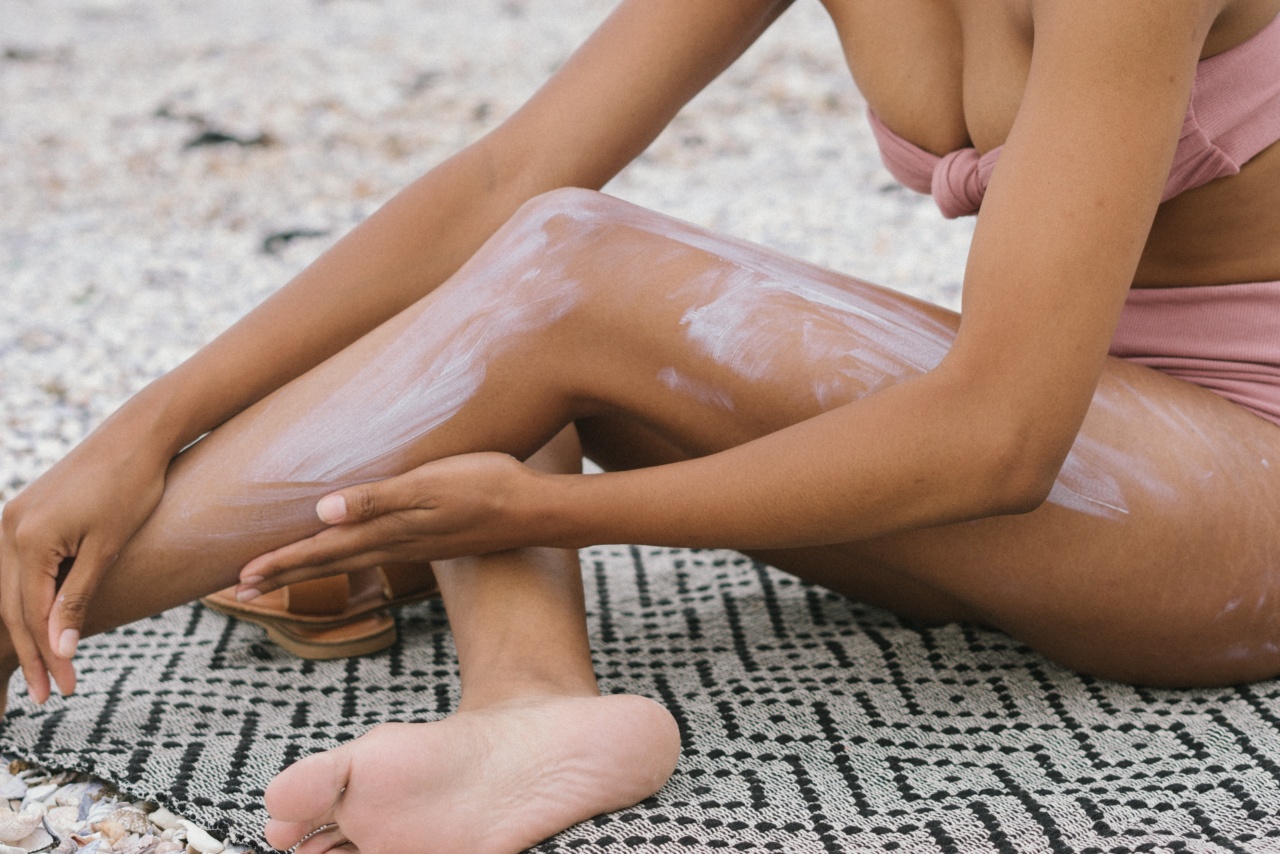The sun emits harmful ultraviolet (UV) rays that can cause long-term damage to your skin. Overexposure to these rays can lead to sunburn, premature aging, and even skin cancer.
Therefore, it is crucial to protect your skin from the sun’s harmful rays by using sunscreen.
Understanding UV Radiation
UV radiation is divided into three types: UVA, UVB, and UVC. UVA rays have longer wavelengths and can penetrate deep into the dermis, the thickest layer of the skin.
These rays are responsible for causing premature aging, wrinkles, and can even suppress the immune system. UVB rays have shorter wavelengths and primarily affect the outer layer of the skin, the epidermis. They are the main culprits behind sunburns and can also contribute to the development of skin cancer.
UVC rays are the most dangerous, but luckily, they are absorbed by the Earth’s atmosphere and do not reach our skin.
How Does Sunscreen Work?
Sunscreen is a protective lotion, gel, or spray that contains ingredients capable of blocking or absorbing UV rays. These active ingredients fall under two categories: chemical absorbing filters and physical blocking filters.
Chemical Absorbing Filters
Chemical absorbing filters, such as avobenzone and octinoxate, work by absorbing the UV rays and converting them into heat. These chemicals penetrate the top layer of the skin, absorb the radiation, and then release it harmlessly.
They are effective against both UVA and UVB rays.
Physical Blocking Filters
Physical blocking filters, such as zinc oxide and titanium dioxide, create a physical barrier on the surface of the skin. They reflect and scatter the UV rays, preventing them from penetrating the skin.
These filters are effective against both UVA and UVB rays as well.
Choosing the Right Sunscreen
When selecting a sunscreen, it is essential to consider a few factors:.
Sun Protection Factor (SPF)
SPF measures a sunscreen’s ability to protect against UVB rays. The higher the SPF, the more protection it provides.
It is recommended to choose a broad-spectrum sunscreen with an SPF of 30 or higher to provide adequate protection against both UVA and UVB rays.
Water Resistance
If you are planning to swim or engage in water activities, opt for a water-resistant sunscreen to ensure it stays on your skin even when wet.
However, keep in mind that no sunscreen is entirely waterproof, so reapplication is still necessary after swimming or excessive sweating.
Skin Type
Consider your skin type when selecting sunscreen. If you have sensitive skin, opt for a sunscreen formulated for sensitive skin or one that is fragrance-free.
People with oily skin might prefer oil-free or gel-based sunscreens, while those with dry skin may benefit from a moisturizing sunscreen.
Proper Sunscreen Application
Simply applying sunscreen is not enough; you must apply it correctly to ensure optimal protection:.
Apply Generously
Most people do not apply enough sunscreen, which reduces its efficacy. A general guideline is to use around one ounce (about a shot glass full) to cover your entire body.
Make sure to pay extra attention to commonly neglected areas, including the ears, back of the neck, and tops of the feet.
Apply 15 Minutes Before Sun Exposure
For the sunscreen to bind with your skin and offer the best protection, apply it at least 15 minutes before going out into the sun. This allows time for the sunscreen to fully absorb.
Reapply Every Two Hours
Sunscreen loses its effectiveness over time, especially when exposed to the sun’s rays or water. Reapply your sunscreen every two hours or more frequently if you sweat excessively or come into contact with water.
Additional Sun Protection Measures
While sunscreen is crucial in protecting your skin, it should not be the only line of defense. Combine sunscreen use with the following measures for comprehensive protection:.
Wear Protective Clothing
Opt for long-sleeved shirts, pants, wide-brimmed hats, and UV-blocking sunglasses to shield your skin and eyes from direct sun exposure.
Seek Shade
When the sun is at its strongest, typically between 10 a.m. and 4 p.m., stay in the shade as much as possible to minimize sun exposure.
Stay Hydrated
Drinking an adequate amount of water helps keep your skin hydrated and can mitigate the effects of sun exposure.
Regular Skin Examinations
Perform regular self-examinations to check for any unusual moles, spots, or skin changes. If you notice any abnormalities, consult a dermatologist promptly.






























